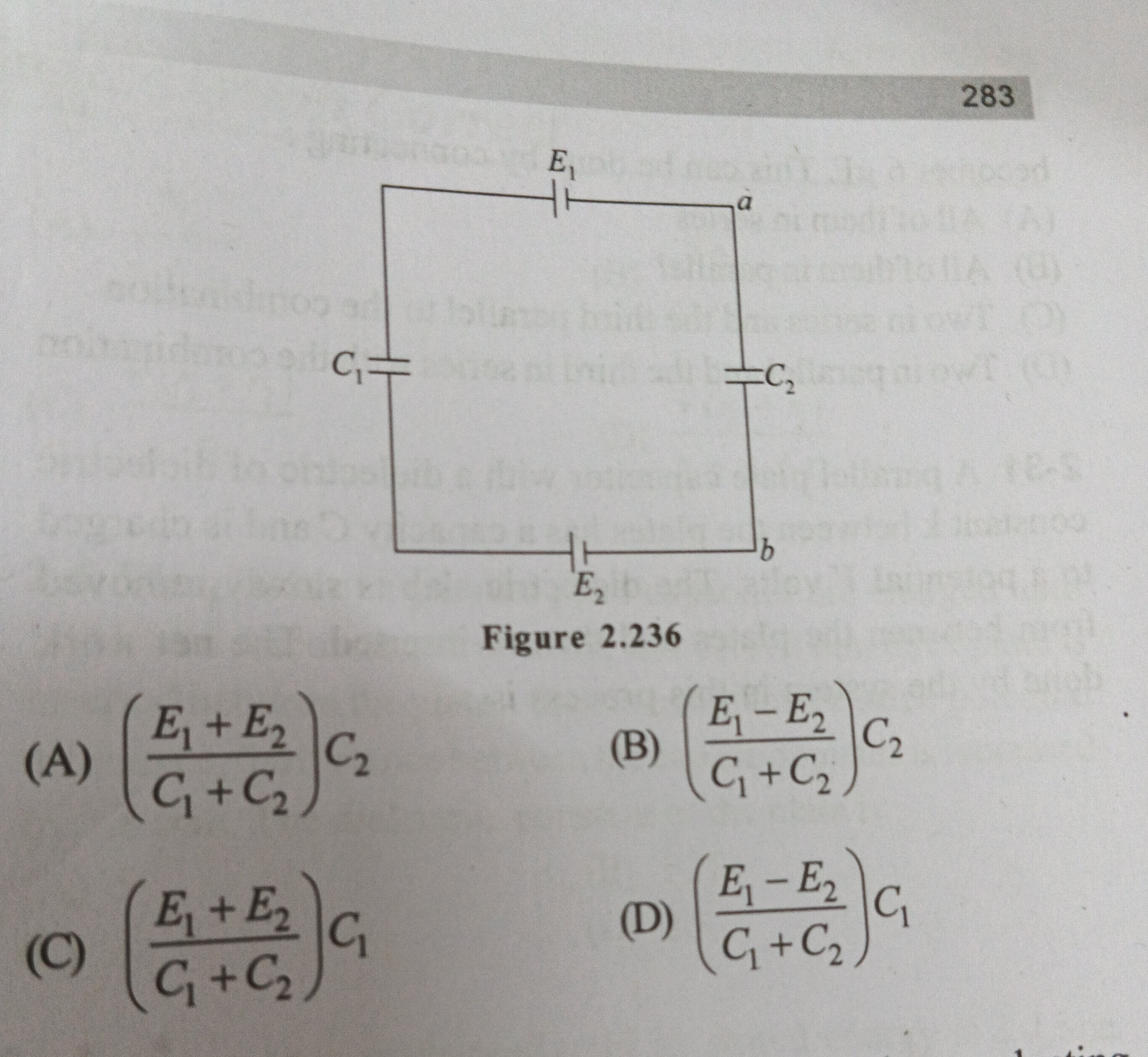Question
Question: ...

(C1+C2E1+E2)C2
(C1+C2E1−E2)C2
(C1+C2E1+E2)C1
(C1+C2E1−E2)C1
(C1+C2E1−E2)C1
Solution
The problem asks for the potential difference between points 'a' and 'b' in the given circuit. The circuit consists of two capacitors C1 and C2, and two batteries E1 and E2, arranged in a closed loop.
To solve this, we apply the superposition principle, a valid method for linear circuits like those with capacitors and batteries. We consider the effect of each battery acting alone and then combine the results.
-
Effect of E1 alone (short E2):
The circuit becomes a series combination of C1 and C2 connected across E1. The equivalent capacitance is Ceq=C1+C2C1C2. The charge on each capacitor is Q=E1Ceq=E1C1+C2C1C2. The potential difference across C2 (which is Va−Vb due to E1) is VC2,E1=Q/C2=(C1+C2)C2E1C1C2=C1+C2E1C1.
-
Effect of E2 alone (short E1):
The circuit becomes a series combination of C1 and C2 connected across E2. The equivalent capacitance is Ceq=C1+C2C1C2. The charge on each capacitor is Q′=E2Ceq=E2C1+C2C1C2. Now, consider the direction. E2 drives charge in the opposite direction compared to E1 for Va−Vb. The positive terminal of E2 is at 'b'. So, Vb is higher than VY. The potential difference across C2 is Va−Vb. If E2 is the only source, it will charge C2 such that Vb>Va (positive charge on lower plate of C2). So, Vb−Va=Q′/C2=(C1+C2)C2E2C1C2=C1+C2E2C1. Therefore, Va−Vb due to E2 alone is VC2,E2=−C1+C2E2C1.
-
Total potential difference:
Va−Vb=VC2,E1+VC2,E2=C1+C2E1C1−C1+C2E2C1. Va−Vb=C1+C2(E1−E2)C1.
Therefore, the final answer is (C1+C2E1−E2)C1.
